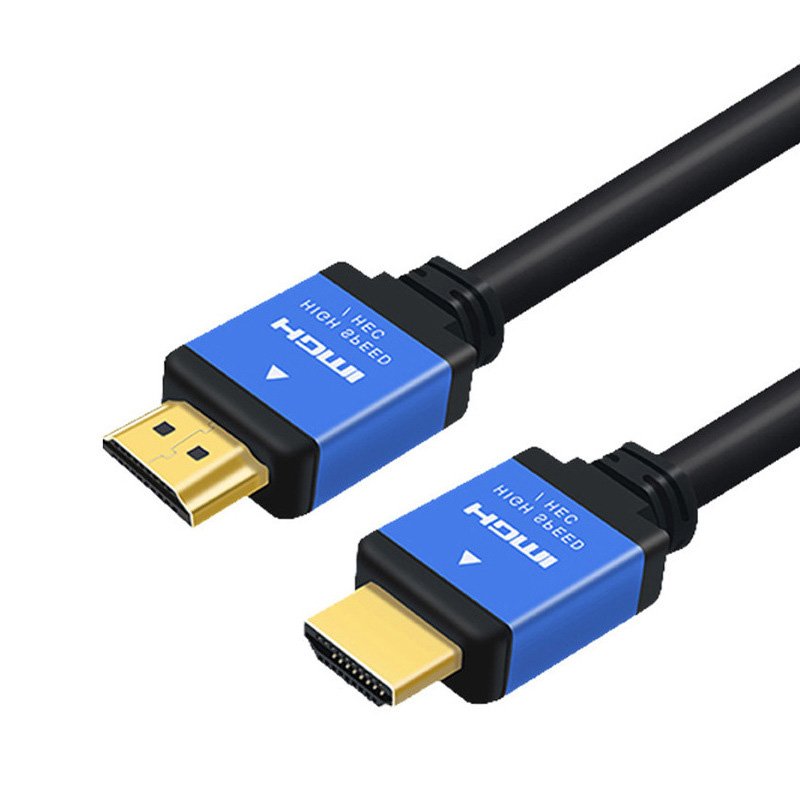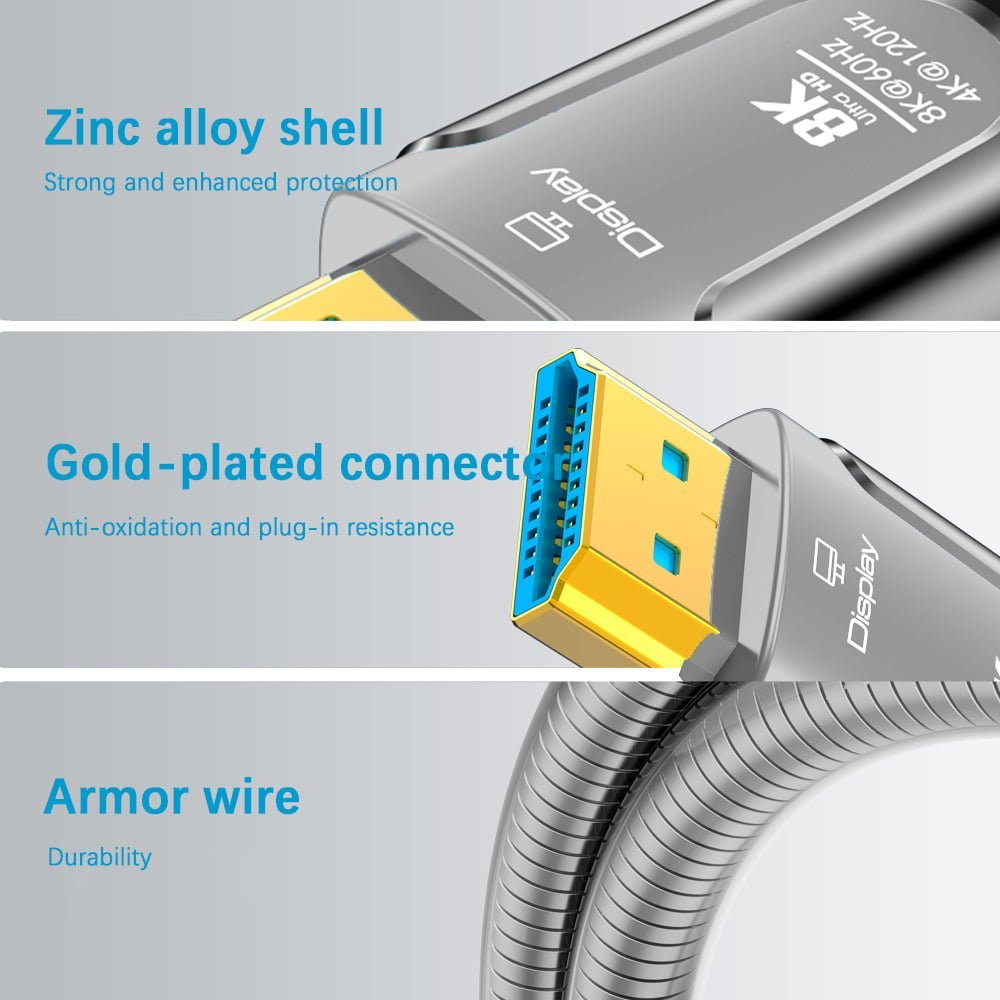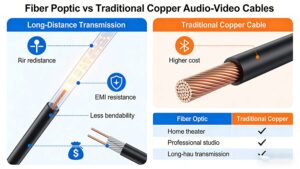Cables HDMI (interfaz multimedia de alta definición) se han convertido en la opción más utilizada para transmitir señales de audio y vídeo de alta calidad entre dispositivos. Pero si está montando un cine en casa, conectando un ordenador a un monitor o conectando otros dispositivos, quizá se pregunte: ¿cuánto tiempo puede durar un cable de Cable HDMI ¿ser? Exploremos esta cuestión y averigüemos qué factores entran en juego.
Aspectos básicos de los cables HDMI
Cables HDMI están diseñados para transportar señales digitales de audio y vídeo sin comprimir. Han sustituido a antiguos tipos de conexión como VGA y de componentes porque ofrecen una solución de cable único para contenidos de alta definición. Cables HDMI se utilizan en una amplia gama de dispositivos, desde televisores y proyectores hasta portátiles, consolas de videojuegos y reproductores Blu-ray.
Factores que afectan a la longitud del cable HDMI
Degradación de la señal
Como Cable HDMI se alarga, la señal que transporta puede degradarse. Esto se debe a que las señales eléctricas que viajan por el cable se debilitan con la distancia. Cuanto más largo sea el cable, más probabilidades hay de que se produzcan problemas como pixelación, distorsión del color o pérdida total de la señal. Este fenómeno se conoce como atenuación y forma parte del comportamiento natural de las señales eléctricas.
Calidad del cable
La calidad del cable HDMI influye mucho en su duración. Los cables de mayor calidad se fabrican con mejores materiales, como conductores de cobre más gruesos y un apantallamiento más eficaz. Estos cables mantienen mejor la integridad de la señal en distancias más largas. Los cables más baratos, por el contrario, pueden no ser capaces de soportar tan bien los tramos largos y son más propensos a la degradación de la señal.
Versión HDMI
Existen diferentes versiones de HDMI, cada una con sus propias capacidades. Las versiones más recientes, como HDMI 2.1 admiten mayores resoluciones (como 8K) y frecuencias de actualización, pero también requieren más ancho de banda. Cuanto mayor sea el ancho de banda requerido, más difícil será transmitir la señal a largas distancias. Las versiones HDMI más antiguas pueden soportar tendidos de cable más largos para contenidos de menor resolución.
Longitudes de cable HDMI recomendadas
Cables HDMI estándar
Cables HDMI estándar suelen utilizarse para resoluciones de hasta 1080i o 720p. La longitud máxima recomendada para estos cables es de unos 7,6 metros. Más allá de esta longitud, puedes empezar a notar una disminución de la calidad audiovisual.
Cables HDMI de alta velocidad
Cables HDMI de alta velocidad están diseñados para resoluciones más altas, incluidas 1080p, 4K y superiores. Ofrecen un mayor ancho de banda para soportar estas funciones avanzadas. Sin embargo, debido a la mayor demanda de ancho de banda, la longitud máxima recomendada para los cables de alta velocidad es menor, normalmente unos 4,6 metros.
Cables HDMI activos
Cables HDMI activos son de otra clase. Contienen tecnología de amplificación de señal que ayuda a mantener la integridad de la señal en distancias más largas. Algunos cables HDMI activos pueden soportar longitudes de hasta 30 metros o más. Sin embargo, suelen ser más caros y pueden requerir una fuente de alimentación externa.
Soluciones para transmisión HDMI a larga distancia
Extensores HDMI
Extensores HDMI son una gran opción para ampliar el alcance de su señal HDMI. Funcionan transmitiendo la señal HDMI a través de cables Ethernet o fibra óptica. Esto le permite alcanzar distancias de más de 100 pies (30 metros) con una degradación mínima de la señal. Los extensores HDMI se utilizan a menudo en instalaciones profesionales, como salas de conferencias o cines en casa, donde son necesarias largas tiradas de cable.
Cables HDMI de fibra óptica
Conclusión
En conclusión, la longitud máxima de un Cable HDMI depende de varios factores, como la degradación de la señal, la calidad del cable y la versión HDMI. Aunque existen directrices generales sobre la longitud de los cables, lo mejor es tener en cuenta tus necesidades específicas y el equipo que utilizas. Si necesita tender un cable HDMI a gran distancia, opciones como cables HDMI activosextensores HDMI o cables HDMI de fibra óptica puede ayudarle a conseguir una conexión fiable con audio y vídeo de alta calidad.
| Tipo de cable HDMI | Longitud máxima aproximada | Resoluciones admitidas | Precio aproximado |
|---|---|---|---|
| Cables HDMI estándar | 7,6 metros (25 pies) | Hasta 1080i o 720p | $5 – $20 |
| Cables HDMI de alta velocidad | 4,6 metros (15 pies) | 1080p, 4K y superior | $10 – $30 |
| Cables HDMI activos | 30 metros o más | Varía según el modelo, admite altas resoluciones | $30 – $100+ |










